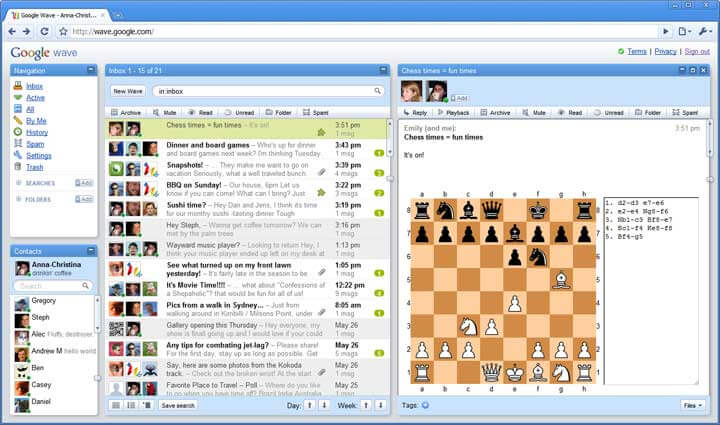Building lasting and impactful enterprise software that works across the board is one of the biggest challenges for any business. Although well-made software solutions significantly improve the bottom line, elevate ERP, and simplify daily working lives of employees, you need to consider many angles and factors to make them work.
When large-scale enterprise application development is in question, there is a lot of room for mistakes and failure. Our selection encompases four telling examples where different factors led to either flops or downright disappointing software.
Explore our list, and avoid these mistakes in you enterprise app development project.
Select Comfort (Enterprise Applications Development)
In 2008, the U.S. manufacturer of beds and bedding products Select Comfort (named after their signature product Sleep Number today) planned to implement a SAP applications suite. The solution included modules for ERP, CRM, supply chain management, and other enterprise applications. The company was positive about the enterprise app development project, saying it will introduce greater flexibility and functionality and reduce costs in the long-term.
The solution should have been implemented in the first part of 2008, but the rollout was cut short by Clinton Group, one of the company’s shareholders. Clinton Group officials said Select Comfort exceeded the budget significantly and went behind schedule.
Having been pressuring Select Comfort for months prior to this, the shareholders also called the company’s leadership reckless. Select Comfort spent twelve million on the enterprise applications development project in 2007, and planned to spend eight million more in 2008; the officials at Clinton Group said the expenses were too large for the company this size. The global financial crisis that started in 2007 wasn’t a reliable backdrop for such decisions either.
Takeaway from the enterprise app development case
Don’t invest into expensive solutions when the economy is in dire state

The U.S. Air Force (Enterprise Software & Enterprise Application Development)
Some projects are just too ambitious to take off. This was the case with the billion-dollar logistics management system for the U.S. Air Force. The software development and enterprise application development efforts should have streamlined supply chain management, saving billions of dollars.
Unfortunately, the project was overly complicated. The implementation was increasingly falling backing schedule while goals were not met. After seven years in development, everything was brought to a stop, because the solution eventually proved to be of “negligible value.” Instead, the U.S. Air Force opted for existing planning and logistics software systems.
Why do such software and enterprise application development efforts fail?
ERP solutions have several stakeholders. Add scale and complexity to the equation, and the solution becomes increasingly complex to manage; everything starts falling apart and there is no longer a way to fix it or roll back.
Takeaway from the enterprise app development case
When you need a solution that would cost millions and millions of dollars, it is better to choose existing frameworks and tested solutions.
Skype (Enterprise App Development)
The concept of Microsoft Skype contributed heavily to establishing borderless communication by text, video, or voice. Millions of people use it, and for many the application is the definitive means for video and voice calls. As smartphones became ubiquitous, Skype should have followed suit.
Still, year after year, Skype has introduced too many updates and redesigns big and small, which resulted in negative feedback (the latest redesign had caused a wide user backlash) and steady but slow user base growth. With broken notifications and other technical problems here and there, using Skype is too often a frustrating experience across most platforms.
While some people may ignore the issues when they use Skype privately several times a week or less, Skype has eventually became a lesson on how not to do enterprise level application development.
In the busy world of today, employees can’t rely on a tool that is so incredibly inconsistent: one has to get used to new designs and tackle technical issues so often that Skype ultimately impedes their productivity.
In a time where custom enterprise application development offers immense possibilities, while other available platforms provide quick and consistent communication tools, Skype could try investing more time in long-term consistency rather than endless tweaking and experimentation.
Skype is not really a failure, but the app is disappointing in a major way.
Takeaway from the enterprise app development case
Stay consistent across platforms. Avoid frequent redesigns
Google Wave (Enterprise App Development)

With this enterprise app development effort, Google wanted to tackle the ultimate challenge: make group emails effective and significantly less cluttered. Wave should have made email threads easier to follow, ensuring almost no information is lost. For project managers with vast distributed teams, Google Wave promised to be a life-saving, stress-reducing tool.
The app allowed managers to plan discussions in stages called “waves,” attaching the right users to the right wave. All this happened in a single space where everybody on the team could discuss different things simultaneously while following the overarching topic. If it sounds complex and confusing, Google Wave was just that.
First and foremost, Google failed to explain what their new product was. This resulted in high expectations: many people were calling Wave the new Gmail. More so, it appears Google were also overly enthusiastic during the enterprise application development — the product skipped the MVP stage. When it launched in 2012, Wave had too many features and was too complex to use. Google shut down the project six months after the release.
Takeaway from the enterprise app development case
Convey your product clearly, especially if it aims to solve complex issues. Whether it’s a startup or established enterprise, testing and gathering feedback is of topmost importance.
Conclusion
Custom enterprise application development is no easy task. There are always too many things to consider and control, because such solutions are mostly aimed at ERP processes for the entire company. On top of that, enterprise applications development demands substantial investments.
If you want your solution to succeed, always make sure you convey what it is clearly, ensure its consistency at the start and throughout the product life cycle, rely on existing frameworks if millions are at stake, and mind the economic backdrop. Finally, approach your project as thoughtfully as you can, considering as much angles and unknowns as possible. You probably won’t avoid some mistakes, but at least dodge the bigger ones.
Talk to our experts on enterprise software development and find out more about the topic and how your business or project can start benefiting from it today!